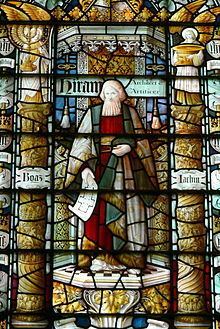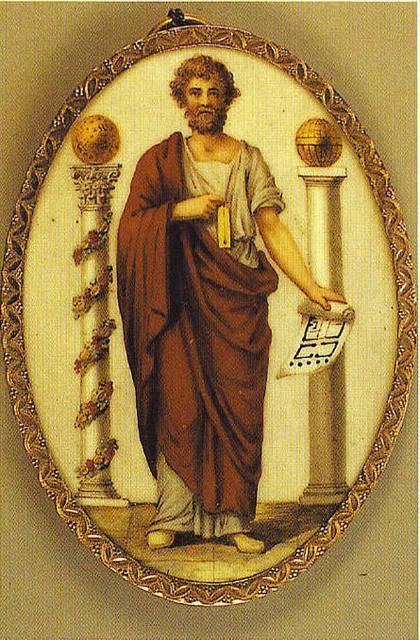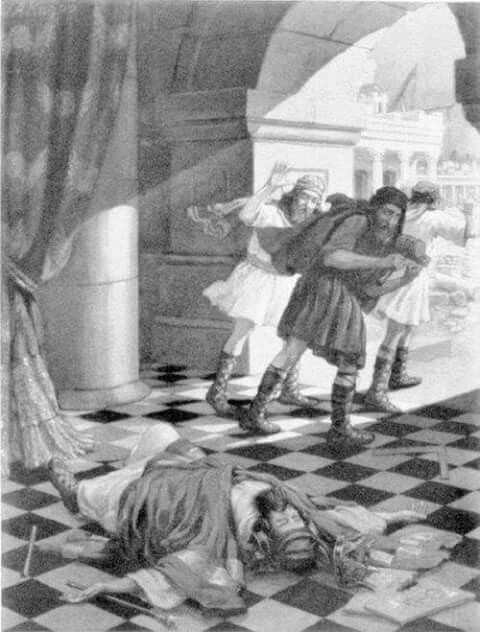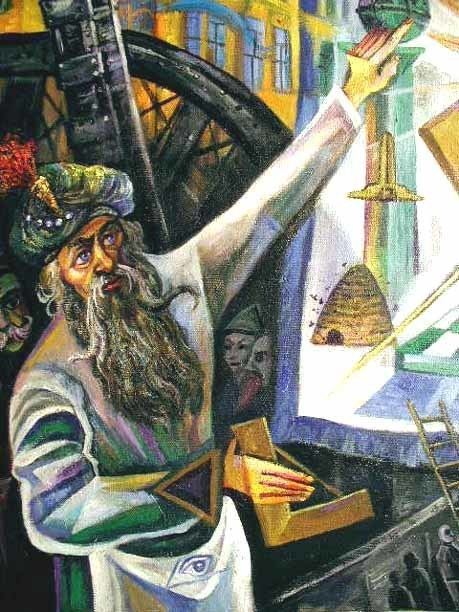People also search for Lucifer, Tammuz, Yahweh | ||
 | ||
Hiram abiff word decode longest ever
Hiram Abiff (also Hiram Abif or the Widow's son) is the central character of an allegory presented to all candidates during the third degree in Freemasonry. Hiram is presented as the chief architect of King Solomon's Temple, who is murdered in the Temple he designed by three ruffians during an unsuccessful attempt to force him to divulge the Master Masons' secret passwords. The themes of the allegory are the importance of fidelity, and the certainty of death.
Contents
- Hiram abiff word decode longest ever
- Hiram Abiff Biblical and Masonic Legend
- The Masonic legend of Hiram Abiff
- Hirams in the Bible
- Other accounts of a biblical Hiram
- Other theories
- References

Hiram Abiff: Biblical and Masonic Legend
The Masonic legend of Hiram Abiff

The tale of Hiram Abiff as passed down in Masonic Lodges underpins the third degree. It starts with his arrival in Jerusalem, and his appointment by Solomon as chief architect and master of works at the construction of his temple. As the temple is nearing completion, three fellowcraft masons from the workforce ambush him as he leaves the building, demanding the secrets of a master mason. Hiram is challenged by each in turn, and at each refusal to divulge the information his assailant strikes him with a mason's tool (differing between jurisdictions). He is injured by the first two assailants, and struck dead by the last. His murderers hide his body under a pile of rubble, returning at night to move the body outside the city, where they bury it in a shallow grave marked with a sprig of acacia. As the Master is missed the next day, Solomon sends out a group of fellowcraft masons to search for him. The loose acacia is accidentally discovered, and the body exhumed to be given a decent burial. The hiding place of the "three ruffians" is also discovered, and they are brought to justice. Solomon informs his workforce that the secrets of a master mason are now lost. He replaces them with substitutes (based on gestures given and words spoken upon the discovery of Hiram's body). Such is the general legend as related in the Anglo-American jurisdictions.

In Continental Freemasonry the tale is slightly different: a large number of master masons (not just Hiram) are working on the Temple, and the three ruffians are seeking the passwords and signs that will give them a higher wage. The result is the same, but this time it is master masons who find the body. The secrets are not lost, but Solomon orders them buried under the Temple, inscribed on Hiram's grave, and the same substitution is made as a mark of respect. The secrets "lost" in the other tradition are here given to new master masons as part of their ritual. In this version, Hiram is often renamed Adoniram.

Anderson's revised 1738 Constitutions describe the place of the Deputy Grand Master, to the left of the newly installed Grand Master John Montagu, 2nd Duke of Montagu, as the "Chair of Hiram Abiff".
Hirams in the Bible

In the Hebrew Bible or Old Testament, there are three separate instances of people named Hiram that were involved in the construction of the temple of Solomon:

Other accounts of a biblical Hiram
Flavius Josephus in his Antiquities of the Jews (Chapter 8:76) refers to Hiram as τεχνίτης, artificer, craftsman. "Now Solomon sent for an artificer out of Tyre, whose name was Hiram: he was by birth of the tribe of Naphtali, on his mother's side (for she was of that tribe); but his father was Ur, of the stock of the Israelites."
The Targum Sheni, an Aramaic commentary on the Book of Esther written sometime between the fall of Rome and the Crusades, credits Hiram with the construction of a miraculous throne for Solomon, which in Esther's time is being used by the descendants of Cyrus the Great.
The most elaborate version of the legend occurs in Gérard de Nerval's 1851 account, Voyage en Orient, where he relates the tale, inserting all the masonic passwords, as part of the story of Balkis, the "Queen of the Morning" and "Soliman", Prince of the Genii. This is an elaboration of the second version above, where the Master Craftsman is named Adoniram. Before his death, he undergoes mystical adventures as his tale is interwoven with that of Solomon and Balkis, the Queen of Sheba. The ruffians who kill him are under the instruction of Solomon himself. De Nerval relates the story as having been told in an Eastern coffee house over a two-week period. A similar account is given in Charles William Heckethorn's The Secret Societies of all Ages and Countries, where Solomon plots to destroy Hiram because of the mutual love between Hiram and the Queen of Sheba. Meanwhile, in 1862, the whole adventure of Adoniram's love for Balkis and his murder by three workmen in the pay of Solomon had been set to music in Charles Gounod's opera, La reine de Saba.
Other theories
According to authors Robert Lomas and Christopher Knight, the prototype for Hiram Abiff was the Egyptian king Seqenenre Tao II, who (they claim) died in an almost identical manner. This idea is dismissed by most Masonic scholars.
In his book The Sufis, the Afghan scholar Idries Shah suggested that Dhul-Nun al-Misri might have been the origin of the character Hiram Abiff in the masonic Master Mason ritual. The link, he believes, was through the Sufi sect Al-Banna ("The Builders") who built the Al-Aqsa Mosque and the Dome of the Rock in Jerusalem. This fraternity could have influenced some early masonic guilds which borrowed heavily from the Oriental architecture in the creation of the Gothic style.
French Masonic historian Paul Naudon has noted parallels between the narrative of Hiram's death and the killing of Renaud de Montauban, as recounted in the late 12th-century epic poem, "The Four Sons of Aymon." Renaud, mirroring the figure of Saint Reinold, meets his end through a hammer strike to the head during his time as a mason at Cologne Cathedral. Subsequently, his body is concealed by his assailants but is later found through miraculous circumstances.
